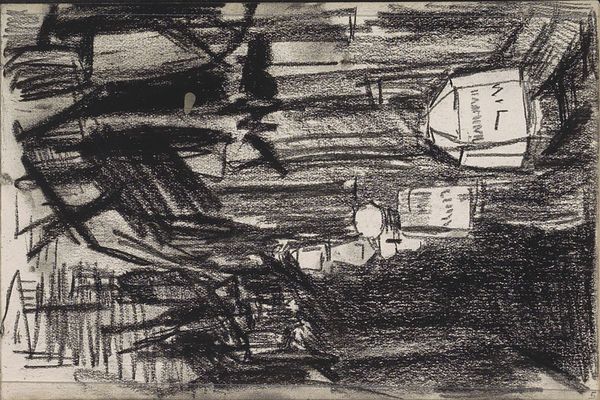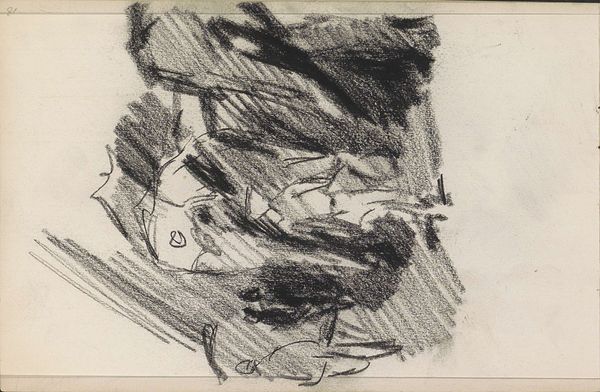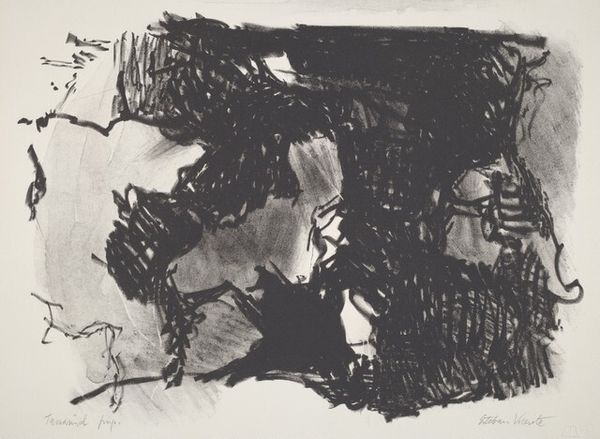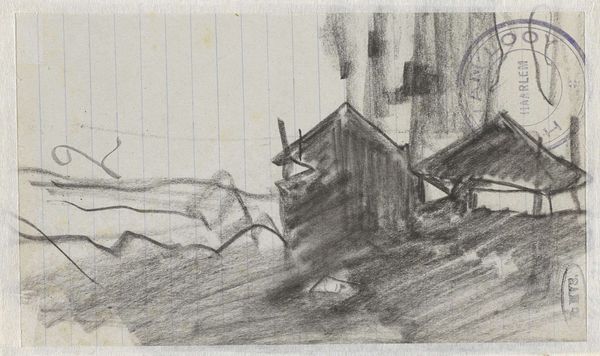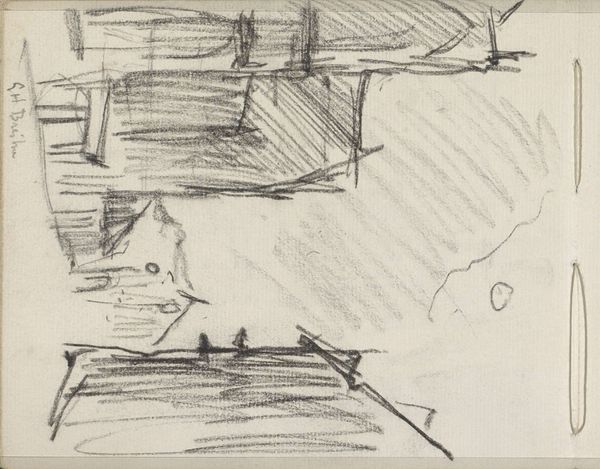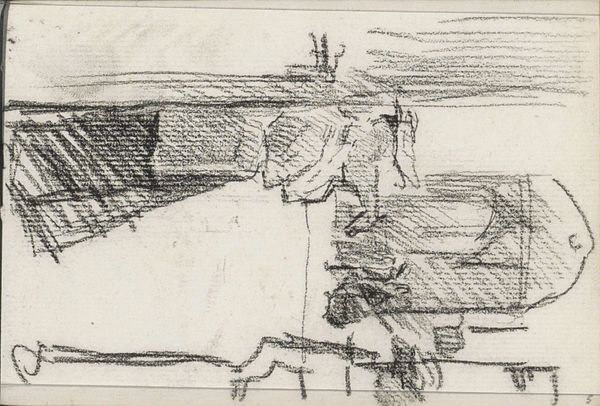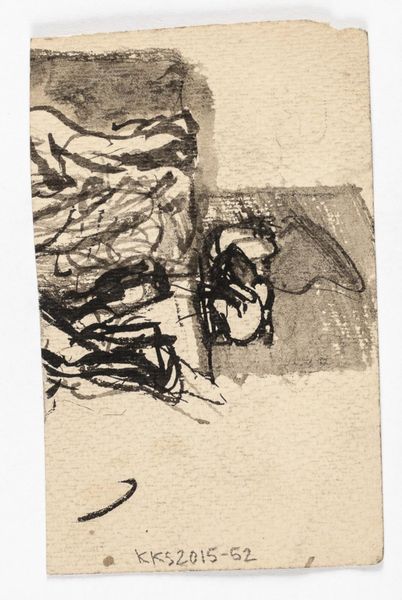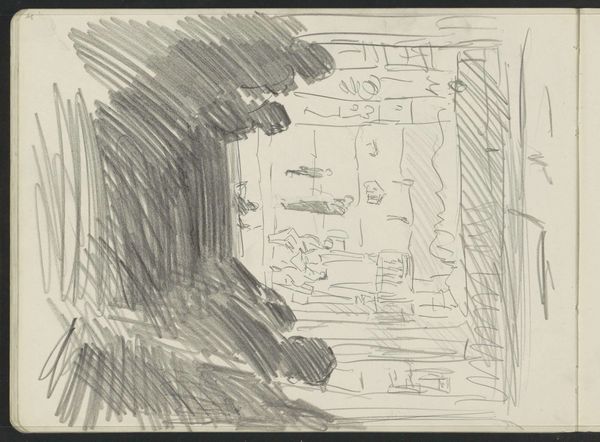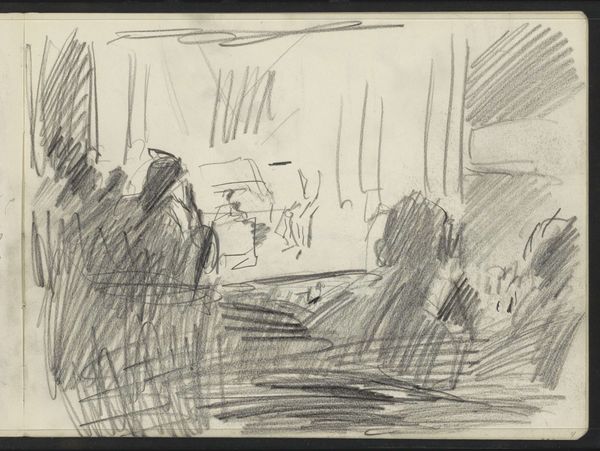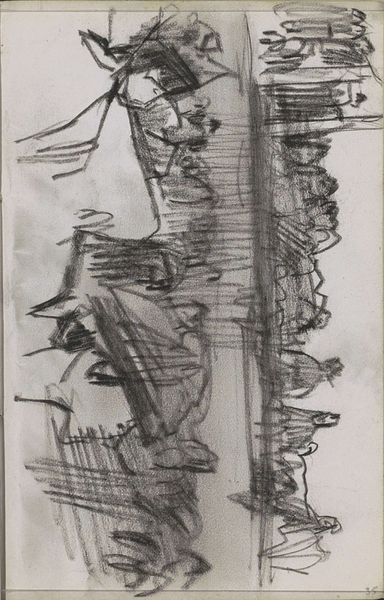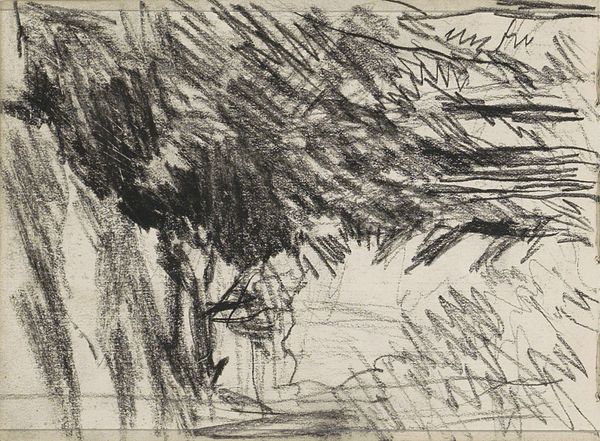
Copyright: Rijks Museum: Open Domain
Curator: Let’s discuss this sketch from the Rijksmuseum’s collection. It's titled "Vrouw, mogelijk voor een kast," or "Woman, possibly in front of a cupboard," attributed to Isaac Israels and estimated to be created between 1875 and 1934. Editor: Immediately, I see the artist captured such a fleeting, melancholic moment. The deep blacks created with either pencil or pen emphasizes this woman is surrounded by a world of shadow. You see the lines give such movement. It’s haunting. Curator: Interesting that you interpret shadows as it rather serves to deconstruct the very structure of social expectations through raw media. The drawing itself, from Israels, highlights the material reality of art production, stripping away the facade often associated with traditional portraits, in that, its focus remains centered around the tangible act of applying marks to paper. The drawing is, quite frankly, economical in production with such little material on the page. Editor: I appreciate that the drawing speaks to how societal burdens bear down, quite physically altering both the way in which Israels’ created art, as well as the woman whom he is portraying. How are these pressures creating a narrative for women during this time? We are speaking of roughly a 60 year range… Can one, therefore, deduce the mental state or gender constraints throughout that time based on what they saw within a physical depiction? Curator: The historical context provides that a shift was underway during those sixty years and Israels gives us an intimate glimpse, not just of the woman's individual experience, but more emphatically what it meant to produce her own life economically by way of self-sustained work by use of readily available and cost efficient materials like that found here, pen and pencil. Editor: I would say the mood reflects larger questions of identity. What it means to be confined within social and artistic boundaries during this transitional period? This resonates deeply even today. Curator: In the end, this is about deconstructing material applications and its impact and value outside elitist ideals. Editor: Precisely. A powerful reflection on labor, material constraints, and the quiet resistance of those overlooked.
Comments
No comments
Be the first to comment and join the conversation on the ultimate creative platform.
